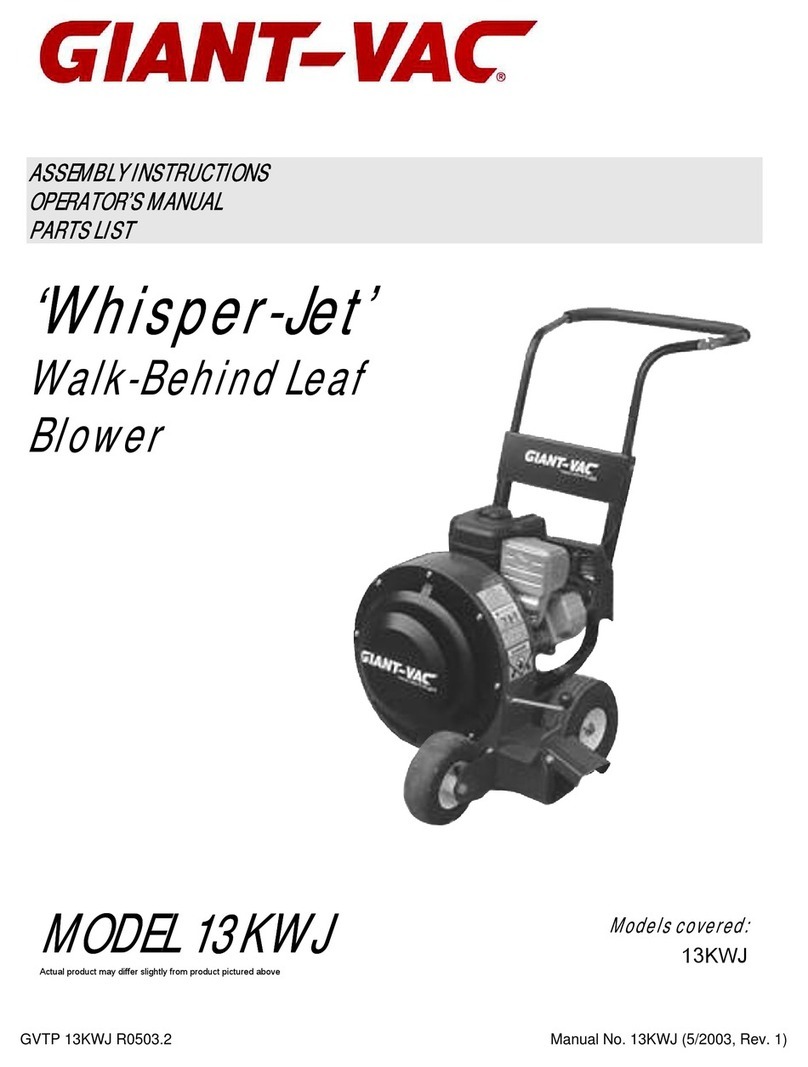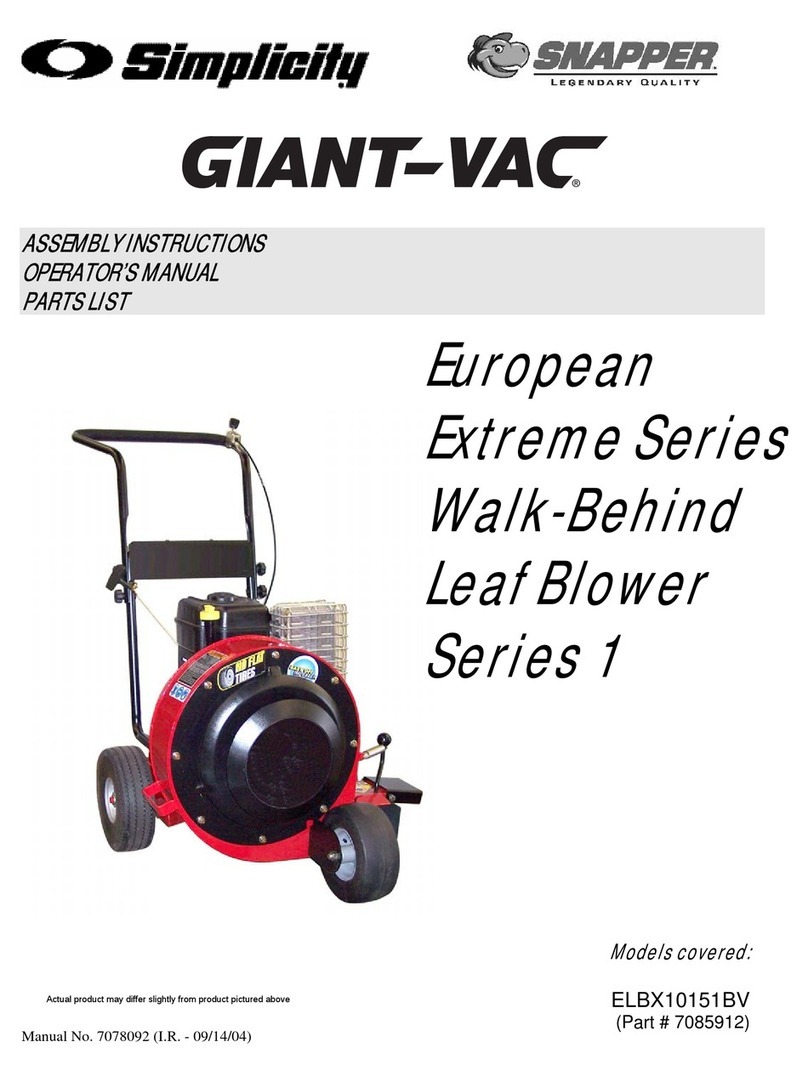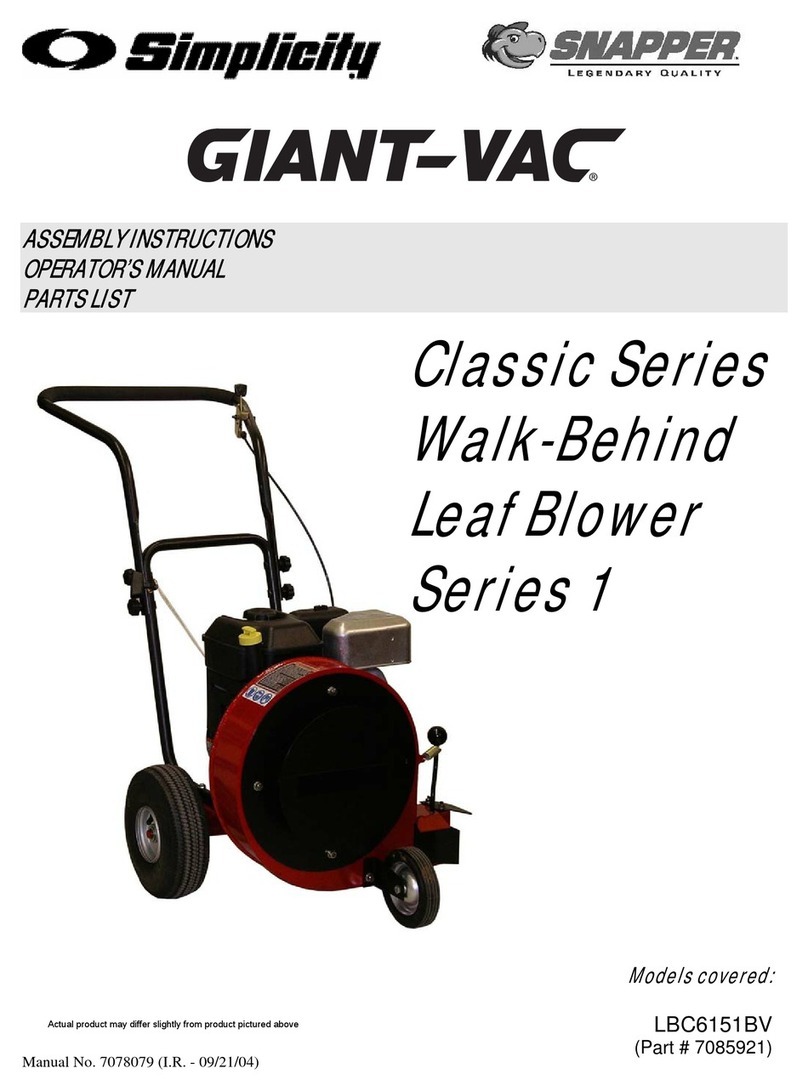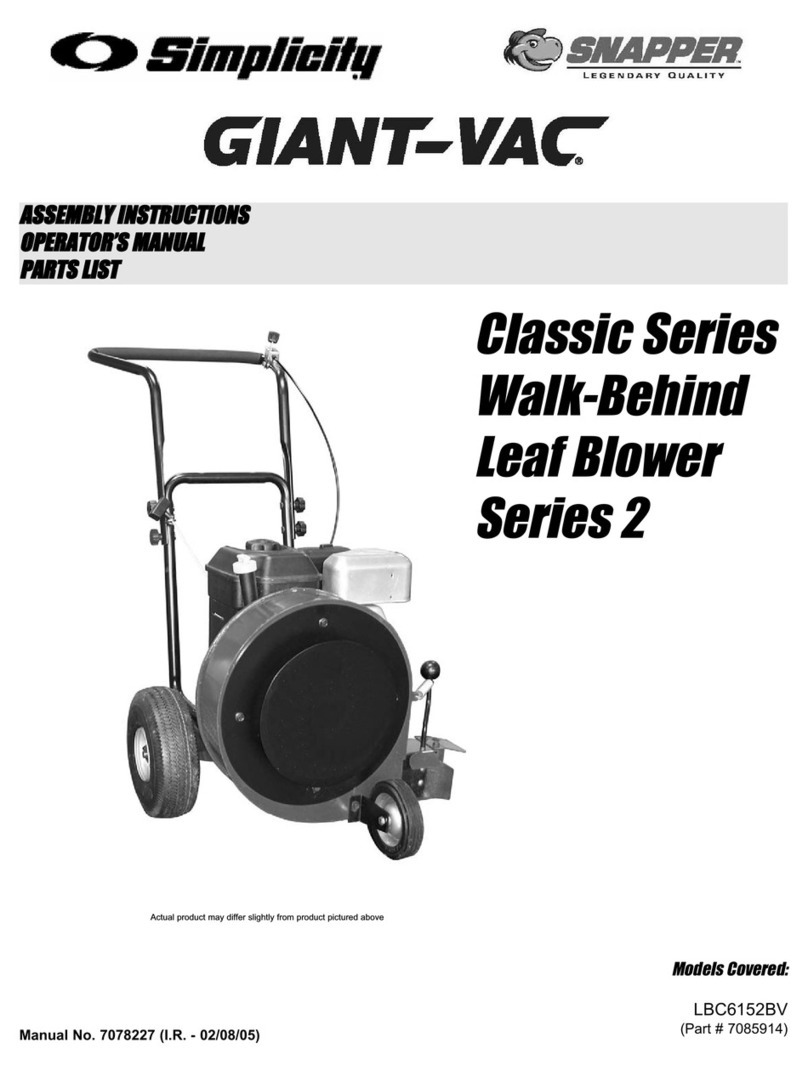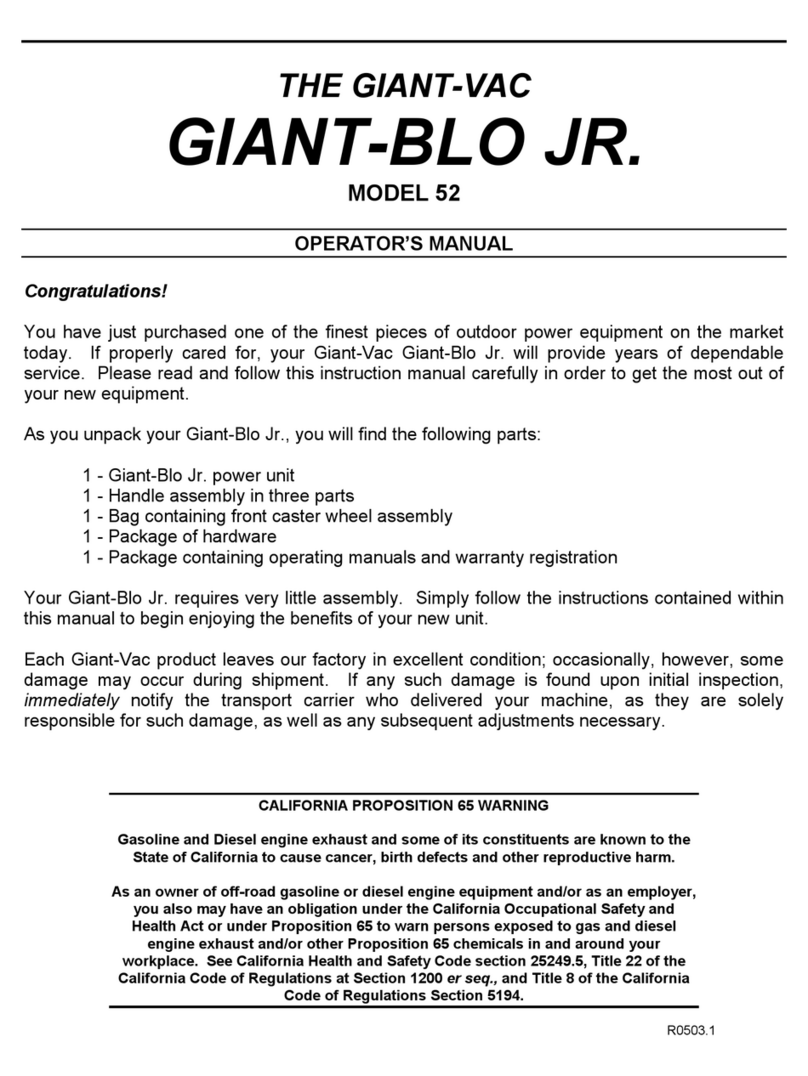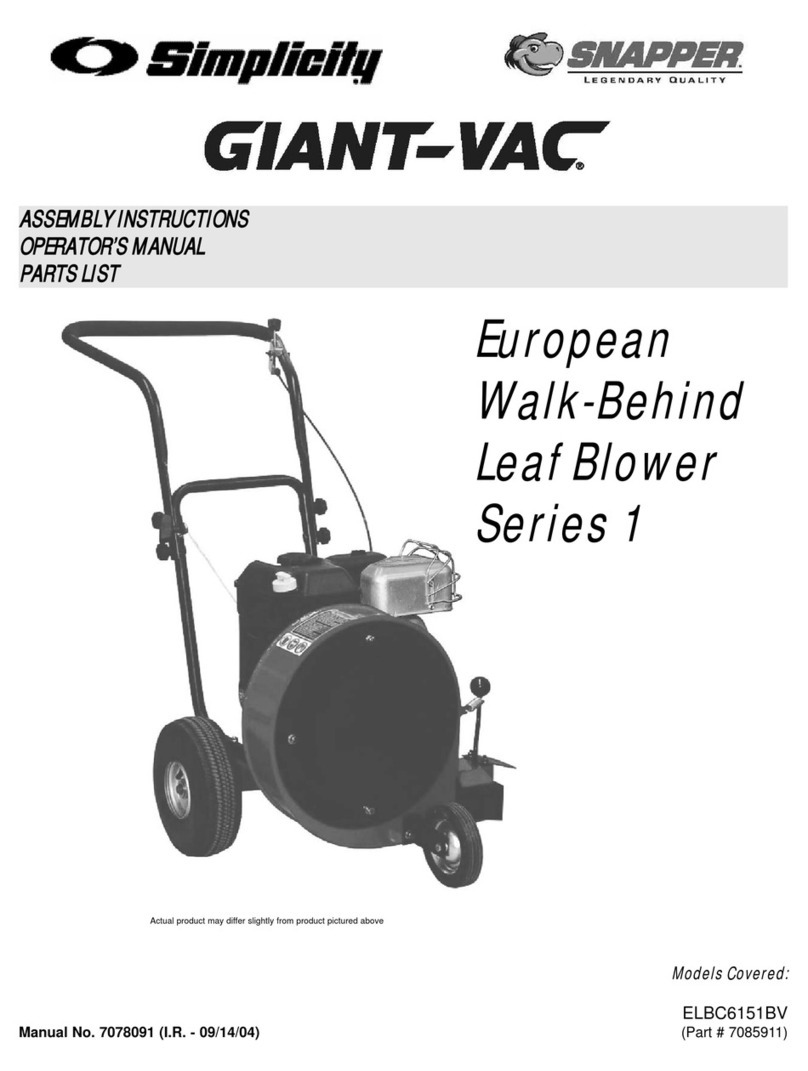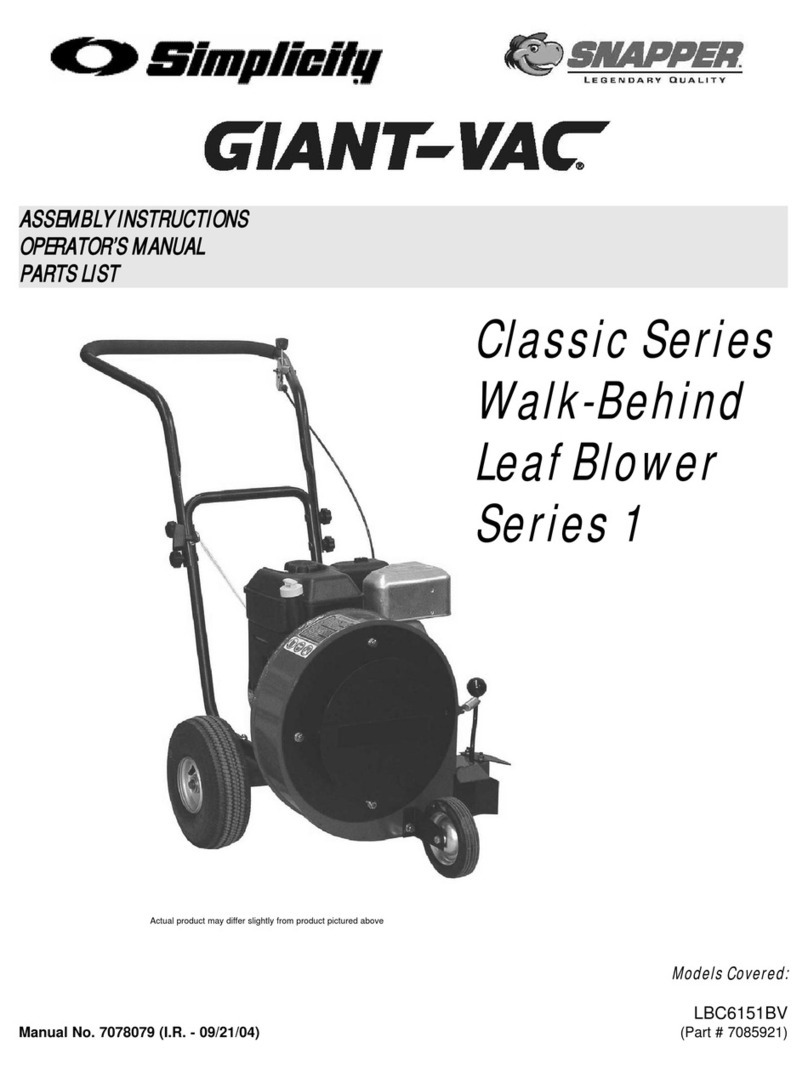
2
safety rules regarding outdoor power equipment
IMPORTANT! READ CAREFULLY THE FOLLOWING SAFETY RULES BEFORE
ASSEMBLING OR OPERATING UNIT.
TRAINING
• Read, understand, and follow all instructions in the
manual and on the unit before starting. If the
operator(s) or mechanic(s) can not read English it is
the owner’s responsibility to explain this material to
them.
• Become familiar with the safe operation of the
equipment, operator controls, and safety signs.
• All operators and mechanics should be trained.
The owner is responsible for training the users.
• Only allow responsible adults, who are familiar
with the instructions, to operate the unit.
• Never let children or untrained people operate or
service the equipment. Local regulations may
restrict the age of the operator.
• The owner/user can prevent and is responsible for
accidents or injuries occurring to themselves, other
people or property.
PREPARATION
• Evaluate the terrain to determine what
accessories and attachments are needed to
properly and safely perform the job. Use only
accessories and attachments approved by the
manufacturer.
• Wear appropriate clothing including safety shoes,
safety glasses and ear protection. Long hair, loose
clothing or jewelry may get tangled in moving parts.
• Inspect the area where the equipment is to be
used and remove all objects such as rocks, toys
and wire, which can be thrown by the machine.
• Use extra care when handling gasoline and other
fuels. They are flammable and vapors are
explosive.
a) Use only an approved container.
b) Never remove fuel cap or add fuel with the
engine running. Allow engine to cool before
refueling. Do not smoke.
c) Never refuel or drain the machine indoors.
• Check that operator’s presence controls, safety
switches and shields are attached and functioning
properly. Do not operate unless they are functioning
properly.
OPERATION
• Never run an engine in an enclosed area.
• Operate only in the daylight or with good artificial
light, keeping away from holes and hidden hazards.
• Be sure of your footing while using pedestrian
controlled equipment, especially when backing up.
Walk, don’t run.
• Do not operate in reverse unless absolutely
necessary. Always look down and behind before
and while traveling in reverse.
• Be aware of the blower discharge direction and do
not point it at anyone. Do not operate the blower
without deflectors in place.
• Never leave a running unit unattended. Always
stop engine before leaving unit.
• Never operate with guards not securely in place.
Be sure all safety features are attached, adjusted
properly and functioning properly.
• Never operate with the discharge deflectors
removed or altered.
• Do not change the engine governor setting or over
speed the engine.
• Stop on level ground, shut off engine before
leaving the operator’s position for any reason.
• Stop equipment and inspect impeller blades after
striking objects or abnormal vibration occurs. Make
necessary repairs before resuming operations.
• Keep hands and feet away intake and discharge
areas.
• Keep pets and bystanders away.
• Do not operate the unit while under the influence
of alcohol or drugs.
• Use caution when crossing roads and sidewalks.
Stop engine if not blowing.
• Use care when loading or unloading the machine
into a trailer or truck.
• Use care when approaching blind corners, shrubs,
trees or other objects that may obscure vision.
SLOPE OPERATION
Slopes are a major factor related to loss-of-control
and tip-over accidents, which can result in severe
injury or death. All slopes require extra caution. If
you cannot back up the slope, or if you feel uneasy
on it, do not drive on it.
Do
• Blow across the face of slopes; never up and
down.
• Remove obstacles such as rocks, tree limbs, etc.





